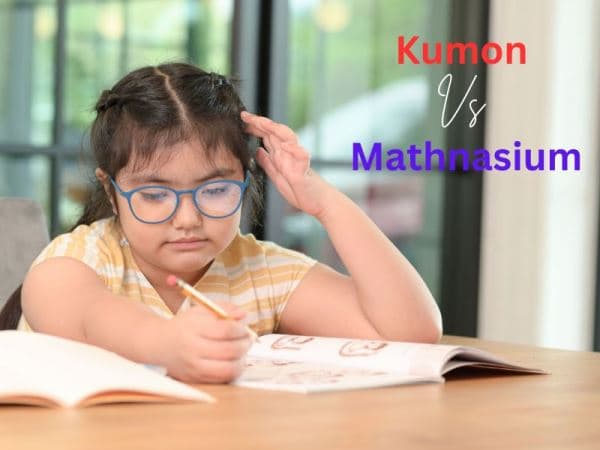Half-day kindergartens typically have an educational period of about three hours. On the other hand, full-day kindergartens operate for a longer period, often five or six hours. Before deciding what to choose, you have to consider the location, financial conditions, and other factors.
Kindergartens first saw light in 1837. Over time, they have evolved to become one of the most crucial elements in the educational life of your young. But there are two main types of kindergartens, so it often becomes hard to choose between them.
I will try to give you a complete overview of their differences and help you choose the right one for your kids.

Image Credit: Freepik
What is Half Day Kindergarten?
A half-day kindergarten is an educational institution where the operational time is finished in one session. These kindergartens typically run in the first half of the day for about three hours.
In these kindergartens, kids get familiar with formal schooling before they join an elementary school. Besides, they get a chance to learn various extracurricular activities that help them in the later parts of their life.
What is a Full-Day Kindergarten?
A full-day kindergarten is where kids can attend for a longer period and learn much more than half-day kindergartens. Full-day kindergartens typically run in two shifts, one in the morning and one in the afternoon.
Children need to attend full-day kindergartens for about five to six hours. In these kindergartens, they get extensive knowledge about their subjects. Plus, they can participate in different activities to enrich their learning.
The chance of social interaction is also higher in full-day kindergartens. But which one should you choose between half-day and full-day kindergarten for your children? Let’s find out the best match for you.
Read Also: When is the best time to take babies to kindergarten?
Half-Day Vs Full-Day Kindergarten: What are the Differences?
These two types of kindergartens have noticeable differences. Let me show you the differences in detail.
Class Time
The main difference between these two kindergartens is the class time. Kids need to participate in shorter classes in half-day kindergartens.
The length of half-day kindergarten is typically 3 hours. But in full-day kindergartens, they have a longer class time. It is between 4.5 and 6 hours. This helps kids develop their core skills further.
Number of Subjects
Most half-day kindergartens have a few core subjects. Students can only study subjects like math or language.
But full-day kindergartens open new horizons with more subjects. You may find subjects related to technology, science, etc., in full-day kindergartens. So, your kids will get acquainted with a wide range of topics in full-day kindergartens.
Fee
Half-day kindergartens are not fee-based because they are required in all states. According to the state laws, public schools must provide free half-day kindergarten.
So, kids can go to half-day kindergarten without paying any fee. But when it comes to full-day kindergartens, they aren’t required in many states.
In fact, full-day kindergarten is compulsory in 17 states. So, these kindergartens will have less funding than half-day kindergartens. As a result, parents have to pay a fee if their kids join full-day kindergartens.
Advantages and Drawbacks of Half-Day Kindergarten
Both kindergarten types have their advantages and drawbacks. Let’s check the half-day kindergarten first.
Advantages
- As half-day kindergarten is far from formal schooling, it is easier for kids to cope with. Many kids face a tough time adjusting to full-day kindergarten. A half-day kindergarten is better for them.
- Due to the short class periods, half-day kindergarten ends much before full-day kindergarten. So your kids will get enough time to play and do other activities. Besides, they can spend more time with the family to learn moral values, ethics, and more.
- Parents don’t need to pay fees for half-day kindergarten. They are mandatory in all states, so the kindergarten has enough funds for schooling.
Limitations
- Half-day kindergarten typically ends at noon. At that time, most parents may be in their workplace. So, picking up their kids from kindergarten becomes tougher.
- The scope for academic learning is limited in half-day kindergarten compared to full-day kindergarten.
Advantages and Drawbacks of Full-Day Kindergarten
Let’s now check the pros and cons of full-day kindergarten.
Advantages
- According to a study, full-day kindergarten is a better transition point between pre-kindergarten and elementary school.
- Students get almost double the instructional time in full-day kindergarten than in half-day kindergarten. So, their learning and development is faster in full-day kindergarten.
- The exposure to wider subjects makes students in full-day kindergarten learn more than half-day kindergarten students.
- Besides core subjects, students get more opportunities for socializing in full-day kindergarten.
Limitations
- As full-day kindergarten isn’t mandatory in many states, parents need to pay a fee for full-day kindergarten.
- The extended period of activity in full-day kindergarten might be difficult for some kids to adjust to. Students may miss nap time.
Check Also: Montessori Vs Traditional Preschool – Key Differences to Consider
Half-Day Vs Full-Day Kindergarten: Which One is Better for Your Children?
You need to consider a lot of factors before deciding what kindergarten fits your needs.
The most important factor is financial stability. Full-day kindergartens had a primary intent of encouraging low-income parents to send their kids to kindergarten. So, some public schools started full-day kindergarten programs for low-income people. Many of these schools were funded by the state.
A study by the National Center for Education Statistics showed that children from low-income families attended full-day kindergarten at a higher rate than affluent families. The rate of enrollment for black and Hispanic children was also higher than for white or non-Hispanic children.
According to a study by the Education Commission of the States, public schools offer full-day kindergarten where the majority of children are from low-income families. Among children enrolled in kindergarten in 2002, 71% were from families with an average income of less than $20,000.
As the income rises up to $50,000, the percentage of kids going to full-day kindergarten gets reduced to 61%. For families earning more than $50,000, the percentage drops even more to 58%. The data shows that parents thought full-day kindergartens were for low-income people.
But the reality is different now. Over time, this pattern has changed with more schools offering full-day kindergarten. Among the schools that offer full-day kindergarten programs now, almost half the schools aren’t funded. So, the expense is expected to rise.
And the percentage of children enrolled in full-day kindergarten has risen to 69%. Now, full-day kindergarten is expensive in many states as they aren’t mandatory. Even though some states, like California, are allowing more budget for public schools to offer full-day kindergarten that will mostly benefit communities where full-day kindergarten is already available.
So, if you have the financial strength and your kid is already familiar with formal schooling, it is better to choose full-day kindergarten. Your children will learn much more in full-day kindergarten, which will pave the road to their future.
But if the kids aren’t strong enough to adjust to the extended class period, you should choose half-day kindergarten. You should also consider the future growth pattern of your kids. If you want them to have extensive knowledge and skills, full-day kindergartens are better.
Final Words
Half-day and full-day kindergarten don’t have only differences in terms of class timing. Instead, they have different subjects, activities, fees, etc. Before choosing one for your kids, you should understand the differences between half-day and full-day kindergarten.
Full-day kindergartens are slowly growing to be mandatory in some states, but half-day kindergartens are already required. You should choose one between these two depending on how comfortable it is for your kids and your family. Take the pickup time, fees, subjects taught, and similar factors into account to find the right kindergarten for your kids.


